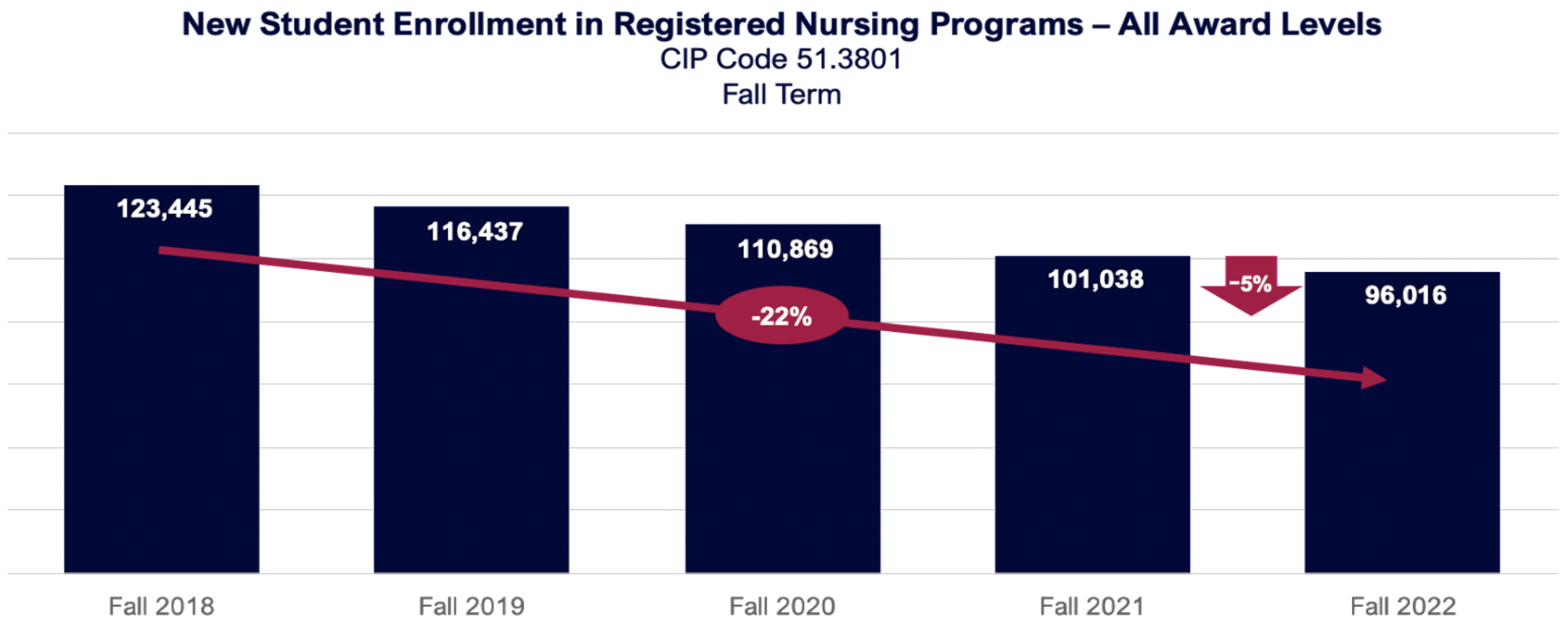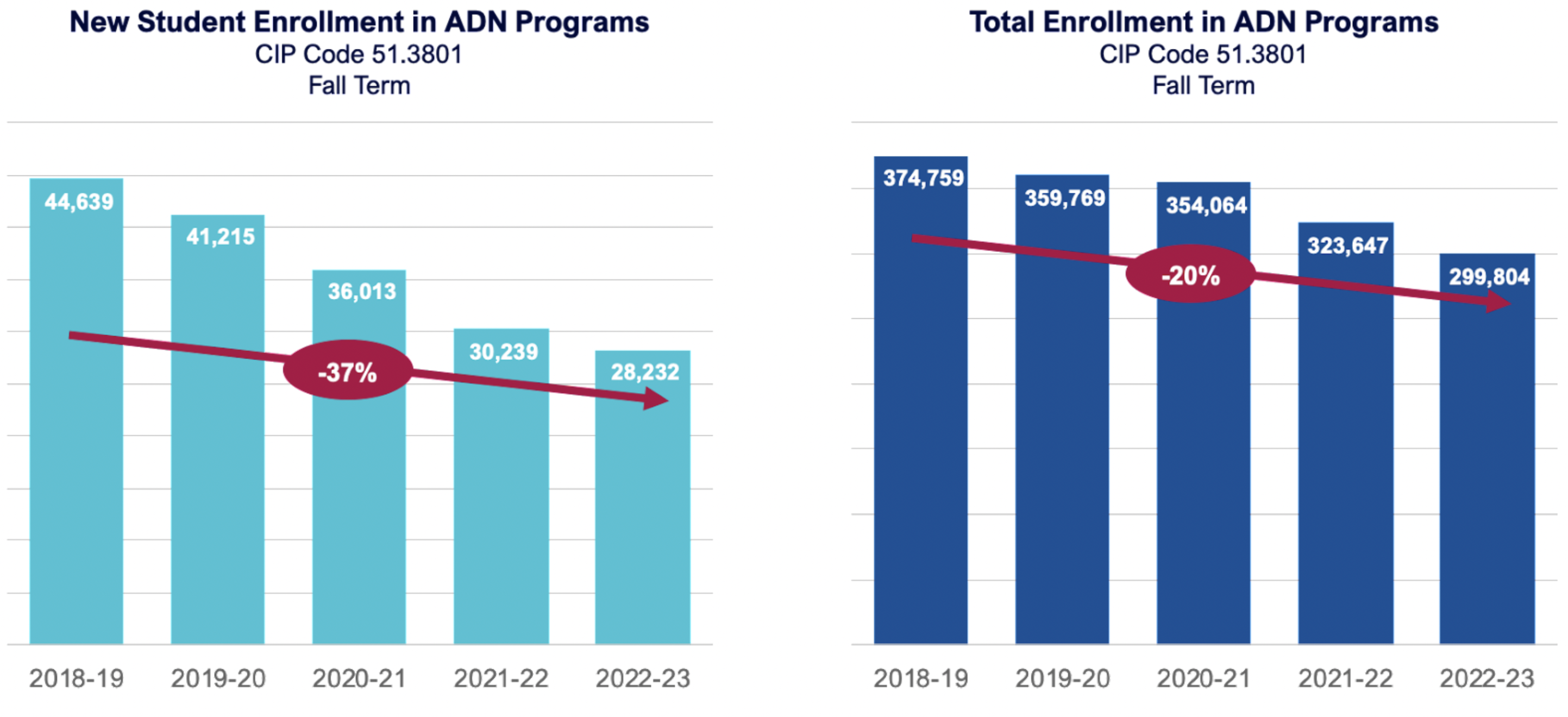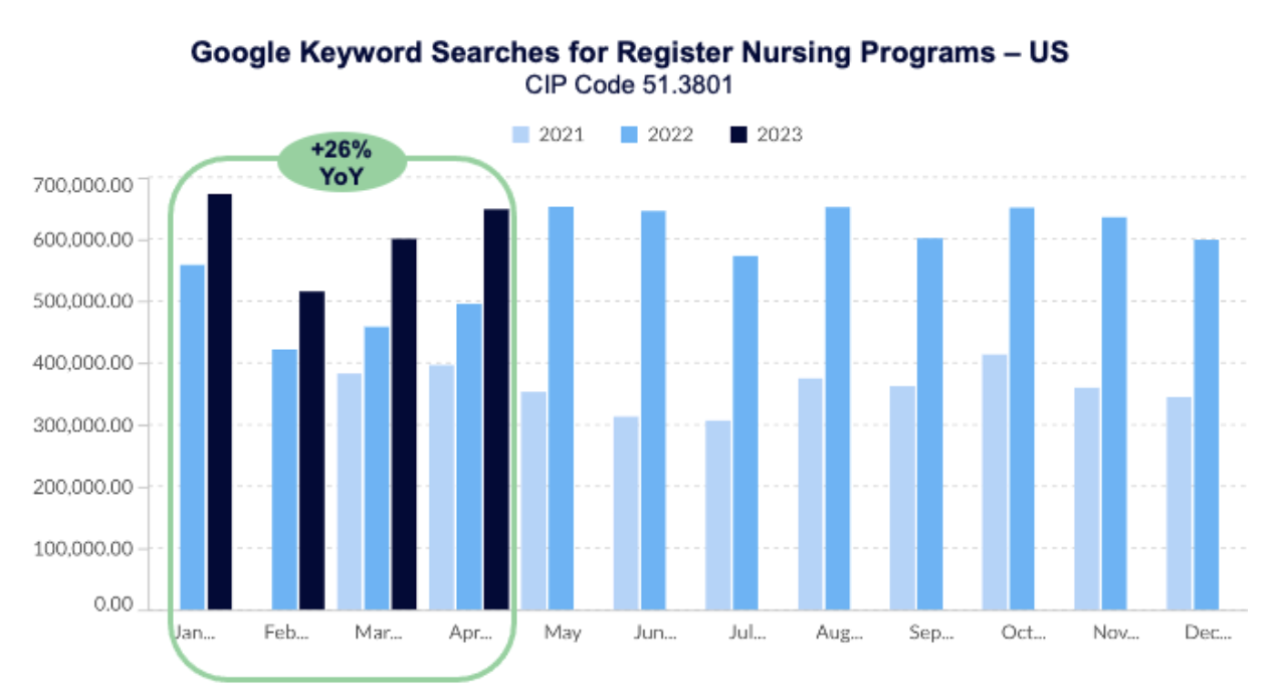A nursing shortage is a major public health issue that has been affecting the United States for several years. The situation seems to be exacerbating due to a variety of factors including the aging population, the retirement of current nurses, high turnover, burnout, and the recent global health crisis. The COVID-19 pandemic, in particular, put a tremendous strain on the healthcare system, further exacerbating the nursing shortage.
According to a nursing workforce analysis published in April 2022 by Dr. David Auerbach, the number of registered nurses (RNs) decreased by over 100,000 from 2020 to 2021. This represents the largest drop in over four decades. Of particular concern is a reduction in the number of younger RNs, which has worrisome implications for the future workforce.
Nursing Program Enrollment Trends
We decided to take a look at recent trends in associate and bachelor’s-level enrollment in Registered Nursing programs to understand the potential pipeline for new nurses entering the workforce. The results are concerning.
First – The Bad News
There has been a consistent decrease in new student enrollment in Registered Nursing (CIP code 51.3801) programs over the five-year period from fall 2018 to fall 2022. Enrollment across all award levels dropped 22 percent during this time period, with a decrease of five percent in the most recent year.

Source: Gray’s Program Enrollment Dashboard with data from National Student Clearinghouse
Entry into the nursing profession as a Registered Nurse (RN) requires an associate or bachelor’s degree, so to better understand the pipeline of new RNs, we will focus on these two award levels for the Registered Nursing program.
ADN Programs: Associate degree Registered Nursing (ADN) programs saw the most substantial enrollment decrease over the past five fall terms, with a 37 percent decline in new student enrollment from fall 2018 to fall 2022. Enrollment was down seven percent in the most recent year.
Total enrollment (new and continuing students) in ADN programs dropped 20 percent from fall 2018 to fall 2022.

Source: Gray’s Program Enrollment Dashboard with data from National Student Clearinghouse
BSN Programs: Trends at the bachelor’s level (BSN programs) are also concerning. New student enrollment fell 15 percent from fall 2018 to fall 2022. The drop in the most recent year was four percent. Total enrollment in BSN programs was down slightly less, with a nine percent decline from fall 2018 to fall 2022.

Source: Gray’s Program Enrollment Dashboard with data from National Student Clearinghouse
A Glimmer of Hope?
The recent downward trend in enrollment is concerning – but the key question is – will the decline continue? While it is impossible to predict the future, one data point we can examine is trends in keyword searches. Gray tracks Google keyword searches by academic program to understand what types of programs prospective students are interested in. The news here for Registered Nursing programs is significantly more optimistic.

Source: Gray’s Keyword Search Dashboard
From January to April 2023, year-over-year keyword searches for Registered Nursing programs were up 26 percent. This implies that interest in the program, at least among prospective students, is growing. Whether this will equate to an increase in enrollment is anyone’s guess, but this uptick in searches provides a glimmer of hope for the future pipeline of nurses.
Addressing the nursing shortage is crucial for ensuring the availability of healthcare services and maintaining quality of patient care. Recent enrollment declines in Registered Nursing programs present a somewhat bleak picture for the future pipeline of nurses needed to address this shortage. We will continue to track these trends with our new Spring enrollment data to see when, and if, enrollment begins to recover.




